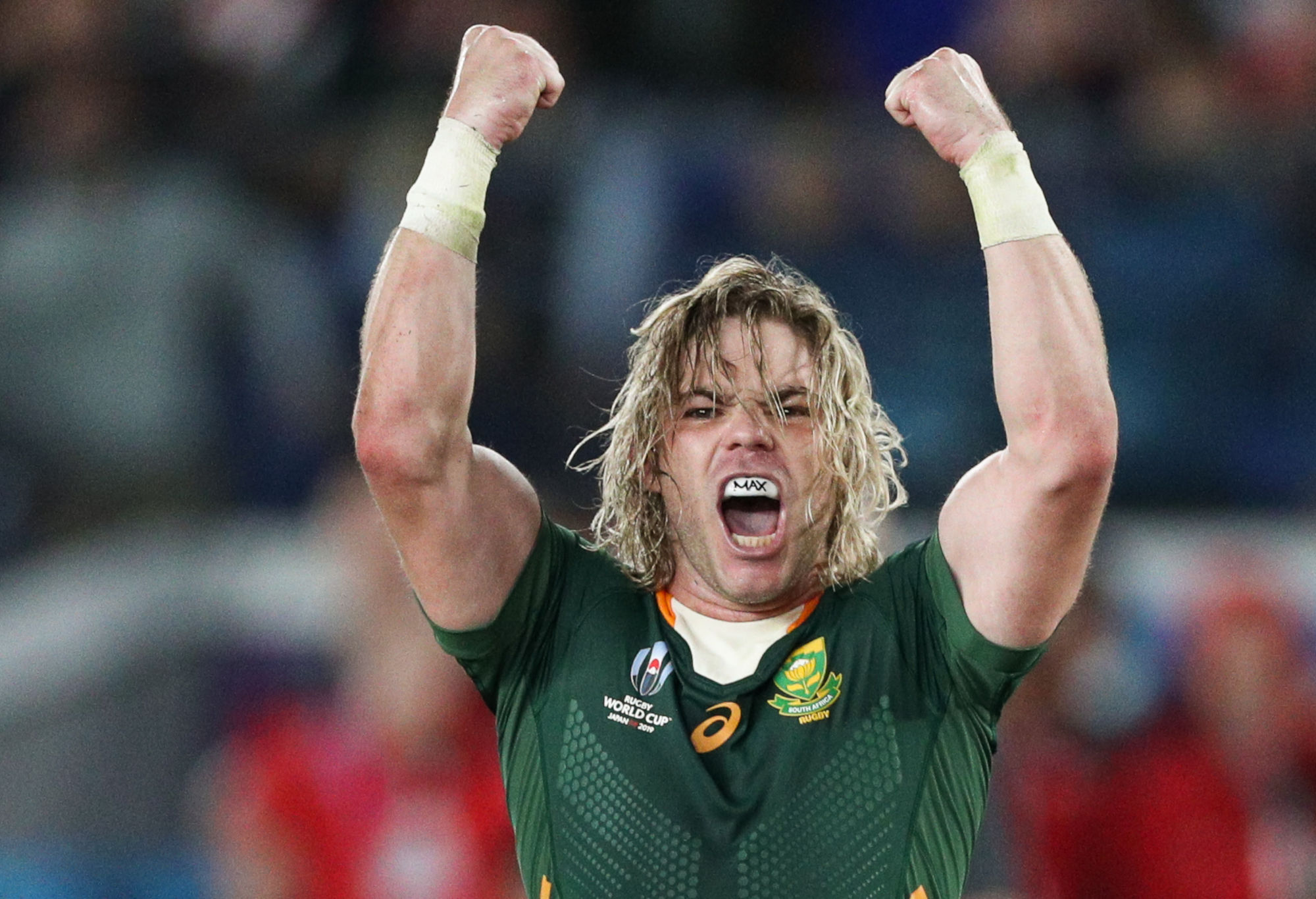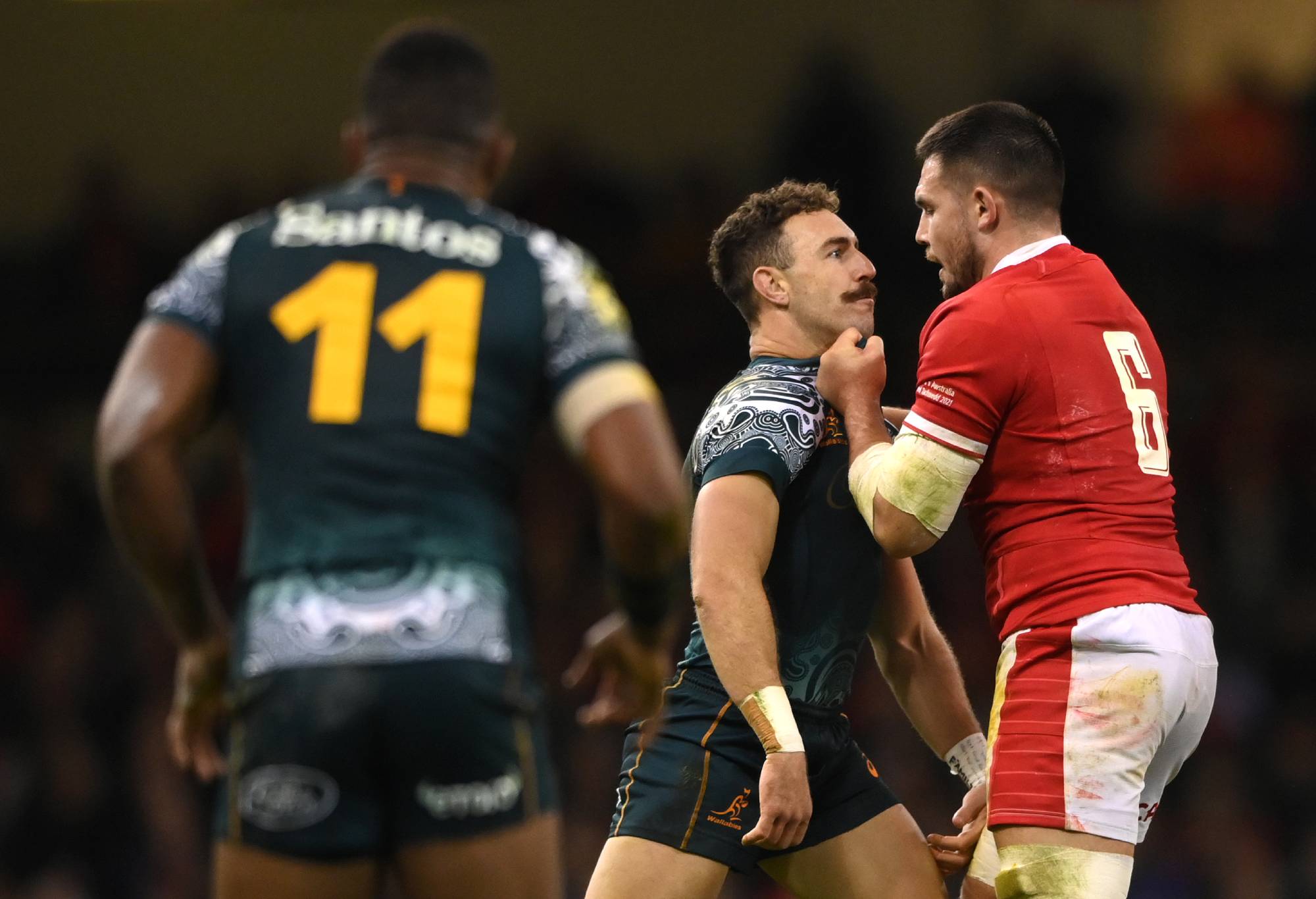The spring-autumn tours ignite in earnest this week as the unlucky Scots accept a different challenge from Fiji, the perpetually dinged up Welsh host presumably fired up New Zealand, the confident Irish clad in blue welcome swaggering South Africa in green, the highly touted French invite the Wallabies to a late night rugby discotheque and the chopped-changed English have the Argentines at Twickenham.
Nine of the top ten teams in rugby will put their contrasting styles and hopes on damp pitches, with points transfers in rankings allowing for a new number one through five.
Key to these clashes of styles will be the wee men at the base of ruck and scrum. Scrumhalves. Halfbacks. Number nines. Part gymnast, part irritant. Garrulous garryowen gunners. Verbose ventriloquists.
They tend to be flashpoints for their fans’ passions: unduly praised or bashed at times for things out of their control.
As Wallaby great Will Genia pointed out in our podcast this week, specific scrumhalf selection, from half to half, is crucial beyond KPI. The shape of play is more dictated from variegated nines than any other selection choice. Nick Bishop weighed in as well, showing and telling how these striations function.
Do you arrive in the same crablike position no matter what your plan? The more upright snipers and the martial artist passers have ‘tells.’ Should you see a picture en route to the base of the ruck? Or go on gut?
More rucks are built now than ever; phase-fractal teams like Ireland create the most and counter-defend teams like France and South Africa try to feast off rucks gone wrong.
If we made a depth chart of the No.9s playing this weekend, how would it look? Bear in mind that any scrumhalf playing behind a French or South African pack has a bit of an edge over an Aussie scrumhalf.
The precious gifts of time and space in a Test can make a Nine look slick;
13. Brad Weber is quick and compact. He seems to make things happen. He may come on in Cardiff with the table set; or it might be white knuckle time. He has never lacked for confidence and appears to be well-liked by teammates. It could be an important moment for Weber to elbow his way into more clear understudy status.
12. Jake Gordon has a strong two-way pass than Tate McDermott. In fact, he probably has a tighter trajectory than Nic White. He won’t make a lot of mistakes, but equally can fail to make a lot of highlights.
Unfortunately for his claims, he will have props Matt Gibbon and Tom Robertson to rely on when he runs on in the latter stages to likely chase the game. That does not sound like a solid plan. This points out the futility of comparing same-team halfbacks whose derivative and vicarious context is never simple to define.
11. Tomos Williams is an ultra fit halfback who fits the Welsh rugby story perfectly. Wales are not sweeping any team aside at the moment, but stay in the fight by reducing their own errors.
Williams is a tidy operator who will give Gareth Anscombe good chances to work. Wayne Pivac will just hope Williams can get to parity against one of the best and savviest All Black halfbacks ever to play the game; or at least not be outclassed.
10. Ali Price made last week’s Team of the Week, almost by default. He is a coach’s delight because he will execute a game plan without worry. With Finn Russell banished, Price carries more of a burden to call the plays. He needs to show a bit of a spark to pull Scotland up by his own bootlaces.
9. Faf de Klerk is a dynamo of aggression, particularly on defence. He is a unique version of halfback in this list because he has roverback carte blanche. Invading passing lanes far past his own defensive line, de Klerk loves to disrupt. He has just had a honeymoon, but his fairytale hold on the nine jersey for the Springboks is over. His off-and-on play has disrupted his own team. Adelaide was Exhibit A. He will want to show something in the final quarter, and this scenario sets up perfectly for him, with an outside chance he is the Bok goalkicker with the match on the line.

(Photo by Craig Mercer/MB Media/Getty Images)
8. Ben Youngs is back. Ordinarily he would be higher on this list, but the issue is how long it has been since he played Test rugby and the rough brilliance of Argentina’s loose trio he will become closely acquainted with this week. Youngs has seen off all challengers in the Eddie Jones era, but few of them have been given a run sufficient to show their wares. On the other hand, if Youngs were to have a poor game, it would open the door wide to Jack van Poortvliet.
7. Jamison Gibson-Park has been instrumental in raising the Irish tempo, scampering from ruck to ruck well over a hundred times a Test, and firing short passes to his runners. He has just managed to get back in time from an injury, but will be on the bench. His weakness is durability in heavy contact; a specific strength of the Boks, who apply a (legally) violent vice to wee men. The Faf vs. JGP tussle is box office.
6. Gonzalo Bertranou was a delight to watch in the Pumas’ wins this year. He has a stop-start style which baffles pillar and post defenders. He is not robotic. He is more of a rugby romantic with a big bag of tricks. Look for him to give England a few headaches.
5. Nic White would be fun to watch if he had a dominant pack in front of him like he sometimes does at his club. However, his strength is how he relishes every challenge and the game within the game. Thus, he tends to be an underrated part of the Wallaby puzzle, unfazed by back foot ball, annoying to one and all, and as pugnacious as a bare knuckle brawler pre-Queensberry rules. Perhaps of all the current nines, White has the best kick on him, and could have a key role in trying to force the French to play more rugby than they want to. He will need to temper his temper, though.

(Photo by Stu Forster/Getty Images)
4. Conor Murray has a massive opening to win his starting place back just in time for a World Cup. He will guide the number one ranked team at home against the current world champions in a mouth-watering matchup of styles.
The irony is Murray may reduce the contrast simply because of his more deliberate rhythm. He will have his hands full because his opposite number is just as big and strong as he is, but about a decade younger. One would think the matchup tips the Irish way merely because Murray and Johnny Sexton have so many repetitions together compared to the Springbok pair (and about two decades of aggregate experience).
3. Jaden Hendrickse, a big casual nine, is only 22, but he plays like a vet. He has a PhD boot and a calmness to him in delivery. Genia called him ‘silky’ and ‘classical’ on Episode 42 of our podcast. That’s as good a description of the deceptively big and deceptively fast Hendrickse who has wrested the starting jersey from de Klerk and shows no signs of relinquishing it. He keeps his head when it gets heated. If the Boks were to take top ranking from Ireland at the Aviva, it would probably mean Hendrickse had matched or even outplayed fellow six-footer Murray, whose style he somewhat emulates.
2. Aaron Smith will surpass Dan Carter as most capped All Black back ever: 113 almost all excellent Tests. He still has the sweetest pass from the deck in the game. With his extra velocity, he can whip the ball to the third channel without looking like he is loading up. His finish is textbook, one hand pointing directly to his target, the other arm his balance, like a trapeze artist.
He has kept his fitness and joy for the game at a constant high. Every team, even France, would slot him into their 23, and everyone except France and maybe kick-heavy defence-first South Africa would give him the start. Even if Nugget’s new sensibility is as father more than cocky competitor, I have a sense he burns just as brightly underneath it all and his praise of Antoine Dupont is a bit calculated (as well as genuine) to get himself geed up
1. Antoine Dupont has Gregory Alldritt, Charles Ollivon, Anthony Jelonch, Cameron Woki, Uini Atonio, Julien Marchand, and Cyril Baille in front of him. All past evidence suggests that battalion will sweep aside the Wallaby pack.
This usually means Dupont has the momentum he loves and every scrumhalf needs. He has no obvious weaknesses in his game. He is a perfectionist on the simple things: lineout collection, soft passes to tight forwards and scrum feed timing. Jake White is a coach fond of saying you must focus more on the strengths of a foe than the weaknesses. His point is a great player like Dupont has developed a variety of compensatory methods to shield you from his minor deficiencies (he is not the best at long passes); but he can sometimes take his strengths for granted.
So, the only hope for the Wallabies to diminish Dupont could be to clog his support lines; flood the carry zone with bodies. Dupont is, after all, still short, and ever will be.
Have your say, Roarers! How do you stack the nines?






























































































